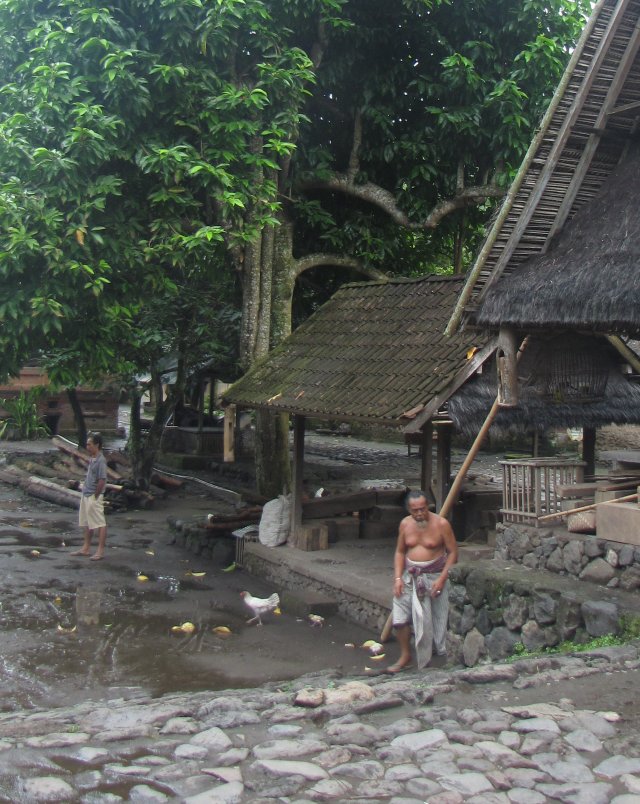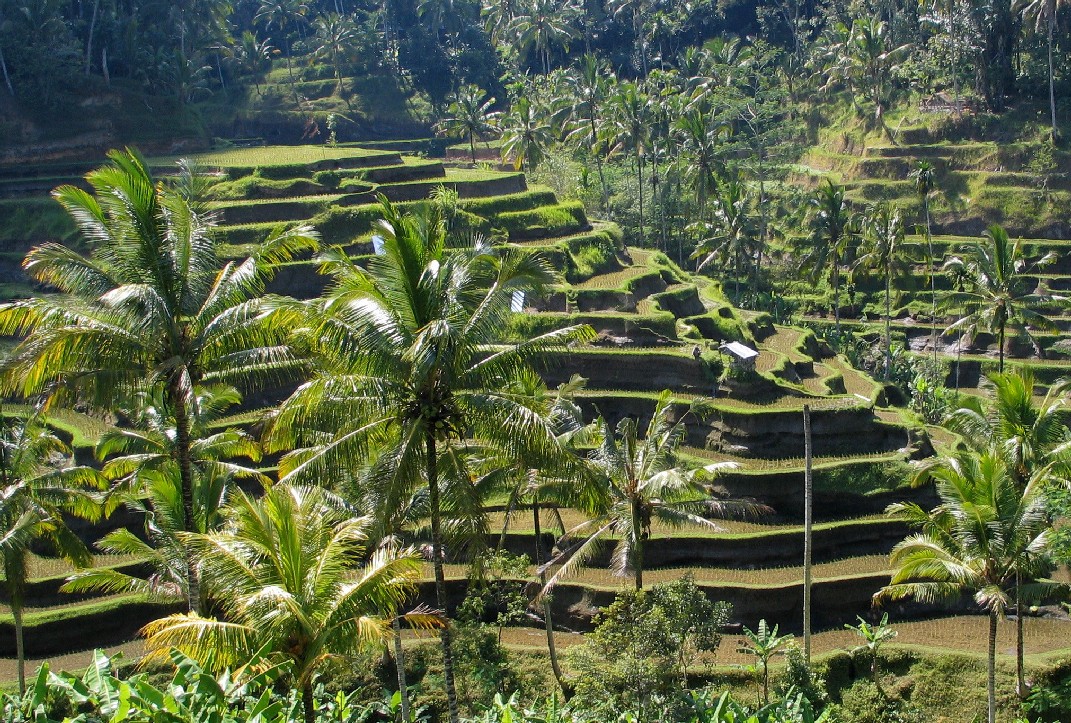|
Tenganan
Tenganan Pegringsingan or Pageringsingan is a village in the regency of Karangasem in East Bali, Indonesia. Before the 1970s was known by anthropologists to be a secluded society in the archipelago. Rapid changes have occurred in the village since the 1970s, such as the development of local communications by the central government, the opening up to tourism, the breaking of the endogamic rules. Tourists are attracted to Tenganan by its unique Bali Aga culture that still holds to the original traditions, ceremonies and rules of ancient Balinese, and its unique village layout and architecture. It is known for its ''gamelan'' ''selunding'' or Gambelan selonding music played on iron metalophones and ''gringsing'' or geringsing double ikat ''Ikat'' (in Indonesian languages means "bind") is a dyeing technique originating from Indonesia used to pattern textiles that employs resist dyeing on the yarns prior to dyeing and weaving the fabric. In ''ikat'', the resist is formed ... [...More Info...] [...Related Items...] OR: [Wikipedia] [Google] [Baidu] |
Geringsing
Geringsing is a '' Tenun'' textile created by the double ikat method in the Bali Aga village of Tenganan Pegeringsingan in Bali. The demanding technique is only practiced in parts of India, Japan and Indonesia. In Indonesia it is confined to the village of Tenganan. According to textile expert John Guy, "the ancestry of Balinese ''geringsing'' is far from clear, although some cloths display the unmistakable influence of ''patola''", the silk double ikats produced in Gujarat during the height of the Spice Trade (16-17C). Many of these imported cloths became the inspiration for later locally-made textiles, but one theory is that the Balinese-made cloths were exported to India and copied there for production to Asian markets. Many have unique Hindu motifs such as a bird's eye view of a mandala with a sacred center from which everything radiates. Others feature designs clearly inspired by ''patola'', for example a design known as the frangipani flower (''Jepun''). The palette of ... [...More Info...] [...Related Items...] OR: [Wikipedia] [Google] [Baidu] |
Bali Aga
The Bali Aga, Baliaga or Bali Mula are the indigenous people of Bali, predominantly located in the eastern part of the island, in Karangasem. They can also be found in north-western and central regions. Bali Aga people that are referred to as ''Bali Pergunungan'' (Mountain Balinese) are those that are located at Trunyan village. For the Trunyan Bali Aga people, the term ''Bali Aga'' (Mountain Balinese) is regarded as an insult with an additional meaning of "the mountain people that are fools"; therefore, they prefer the term ''Bali Mula'' (''lit'' Original Balinese) instead. Origin The original inhabitants of Bali are said to have come from Bedulu village long before the Hindu-Javanese immigration wave. The legend is, there lived the last king of the Pejeng (an old Balinese kingdom), Sri Aji Asura Bumibanten, who had supernatural powers. He could cut off his head without feeling pain and put it back on again. One day, though, his head accidentally fell into a river and was swep ... [...More Info...] [...Related Items...] OR: [Wikipedia] [Google] [Baidu] |
Ikat
''Ikat'' (in Indonesian languages means "bind") is a dyeing technique originating from Indonesia used to pattern textiles that employs resist dyeing on the yarns prior to dyeing and weaving the fabric. In ''ikat'', the resist is formed by binding individual yarns or bundles of yarns with a tight wrapping applied in the desired pattern. The yarns are then dyed. The bindings may then be altered to create a new pattern and the yarns dyed again with another colour. This process may be repeated multiple times to produce elaborate, multicolored patterns. When the dyeing is finished all the bindings are removed and the yarns are woven into cloth. In other resist-dyeing techniques such as tie-dye and ''batik'' the resist is applied to the woven cloth, whereas in ikat the resist is applied to the yarns before they are woven into cloth. Because the surface design is created in the yarns rather than on the finished cloth, in ikat both fabric faces are patterned. A characteristic of '' ... [...More Info...] [...Related Items...] OR: [Wikipedia] [Google] [Baidu] |
Bali Aga Architecture
Bali Aga architecture refers to the architecture of the Bali Aga people, the mountain people of Bali, Indonesia Indonesia, officially the Republic of Indonesia, is a country in Southeast Asia and Oceania between the Indian and Pacific oceans. It consists of over 17,000 islands, including Sumatra, Java, Sulawesi, and parts of Borneo and New Guine .... Compared to the lowland Balinese people, the relative isolation of the Bali Aga people meant that they have been less influenced by Hindu-Buddhist traditions. This separate history can be seen in the vernacular architecture of the Bali Aga which shows more similarity with the Austronesian tradition shared with many Indonesian people across the archipelago. Village layout The layout of Bali Aga villages are similarly aligned with the lowland Balinese villages. Villages are laid out in relation with the mountain-sea axis of ''kaja'' ("to the mountain") and ''kelod'' ("to the sea") axis, and the sun path of ''kangin'' (wher ... [...More Info...] [...Related Items...] OR: [Wikipedia] [Google] [Baidu] |
Karangasem Regency
Karangasem Regency (Indonesian: ''Kabupaten Karangasem'') is a regency (''kabupaten'') of Bali, Indonesia. It covers the east part of Bali, has an area of 839.54 km2 and had a population of 396,487 at the 2010 Census which rose to 492,402 at the 2020 Census. Its regency seat is the town of Amlapura. Karangasem was devastated when Mount Agung erupted in 1963, killing 1,900 people. Karangasem was a kingdom before Bali was conquered by the Dutch. Administrative districts The regency is divided into eight districts (''kecamatan''), tabulated below with their areas and population totals at the 2010 Census and the 2020 Census. The table also includes the number of administrative villages (rural ''desa'' and urban ''kelurahan'') in each district, and its postal codes. Note: (a) including 6 small offshore islands. Tourism Interesting places include: * The major Pura Besakih Hindu temple, sometimes called the Mother Temple of Besakih. * Mount Agung, the highest peak in ... [...More Info...] [...Related Items...] OR: [Wikipedia] [Google] [Baidu] |
Gamelan Selunding
''Gamelan selunding'' (also spelled ''selonding'') is a sacred ensemble of gamelan music from Bali, Indonesia. The ''selunding'' ensemble is from Tenganan, a village in east Bali; the ensemble is rare. Selunding means "great" or "large". ''Selonding'' is also a musical instrument made of iron.Broughton, Simon, et al., eds. ''World Music: The Rough Guide''. London: The Rough Guides, 1994. . Page 424. See also * Gamelan * Beleganjur ''Gamelan beleganjur'' (also spelled ''balaganjur'') is one of the most popular styles of gamelan music in Bali. Its closest Western analogue is probably the Western military band. History Like the Western military band, the original purpose of ... * Gong kebyar References Music of Bali Gamelan ensembles and genres {{music-genre-stub ... [...More Info...] [...Related Items...] OR: [Wikipedia] [Google] [Baidu] |
Indonesia
Indonesia, officially the Republic of Indonesia, is a country in Southeast Asia and Oceania between the Indian and Pacific oceans. It consists of over 17,000 islands, including Sumatra, Java, Sulawesi, and parts of Borneo and New Guinea. Indonesia is the world's largest archipelagic state and the 14th-largest country by area, at . With over 275 million people, Indonesia is the world's fourth-most populous country and the most populous Muslim-majority country. Java, the world's most populous island, is home to more than half of the country's population. Indonesia is a presidential republic with an elected legislature. It has 38 provinces, of which nine have special status. The country's capital, Jakarta, is the world's second-most populous urban area. Indonesia shares land borders with Papua New Guinea, East Timor, and the East Malaysia, eastern part of Malaysia, as well as maritime borders with Singapore, Vietnam, Thailand, the Philippines, Australia, Palau, an ... [...More Info...] [...Related Items...] OR: [Wikipedia] [Google] [Baidu] |
Bali
Bali () is a province of Indonesia and the westernmost of the Lesser Sunda Islands. East of Java and west of Lombok, the province includes the island of Bali and a few smaller neighbouring islands, notably Nusa Penida, Nusa Lembongan, and Nusa Ceningan to the southeast. The provincial capital, Denpasar, is the List of Indonesian cities by population, most populous city in the Lesser Sunda Islands and the second-largest, after Makassar, in Eastern Indonesia. The upland town of Ubud in Greater Denpasar is considered Bali's cultural centre. The province is Indonesia's main tourist destination, with a significant rise in tourism since the 1980s. Tourism-related business makes up 80% of its economy. Bali is the only Hinduism in Indonesia, Hindu-majority province in Indonesia, with 86.9% of the population adhering to Balinese Hinduism. It is renowned for its highly developed arts, including traditional and modern dance, sculpture, painting, leather, metalworking, and music. The Ind ... [...More Info...] [...Related Items...] OR: [Wikipedia] [Google] [Baidu] |
Time In Indonesia
The Indonesian Archipelago geographically stretches across four time zones from UTC+06:00 in Aceh to UTC+09:00 in Papua. However, the Indonesian government recognises only three time zones in its territory, namely: *Western Indonesia Time (WIB) — seven hours ahead ( UTC+07:00) of the Coordinated Universal Time (UTC); *Central Indonesia Time (WITA) — eight hours ahead ( UTC+08:00) of UTC; *Eastern Indonesia Time (WIT) — nine hours ahead ( UTC+09:00) of UTC. The boundary between the Western and Central time zones was established as a line running north between Java and Bali through the provincial boundaries of West and Central Kalimantan. The border between the Central and Eastern time zones runs north from the eastern tip of Indonesian Timor to the eastern tip of Sulawesi. Daylight saving time (DST) is no longer observed anywhere in Indonesia. Current usage In Indonesia, the keeping of standard time is divided into three time zones: These time zones were first obs ... [...More Info...] [...Related Items...] OR: [Wikipedia] [Google] [Baidu] |





